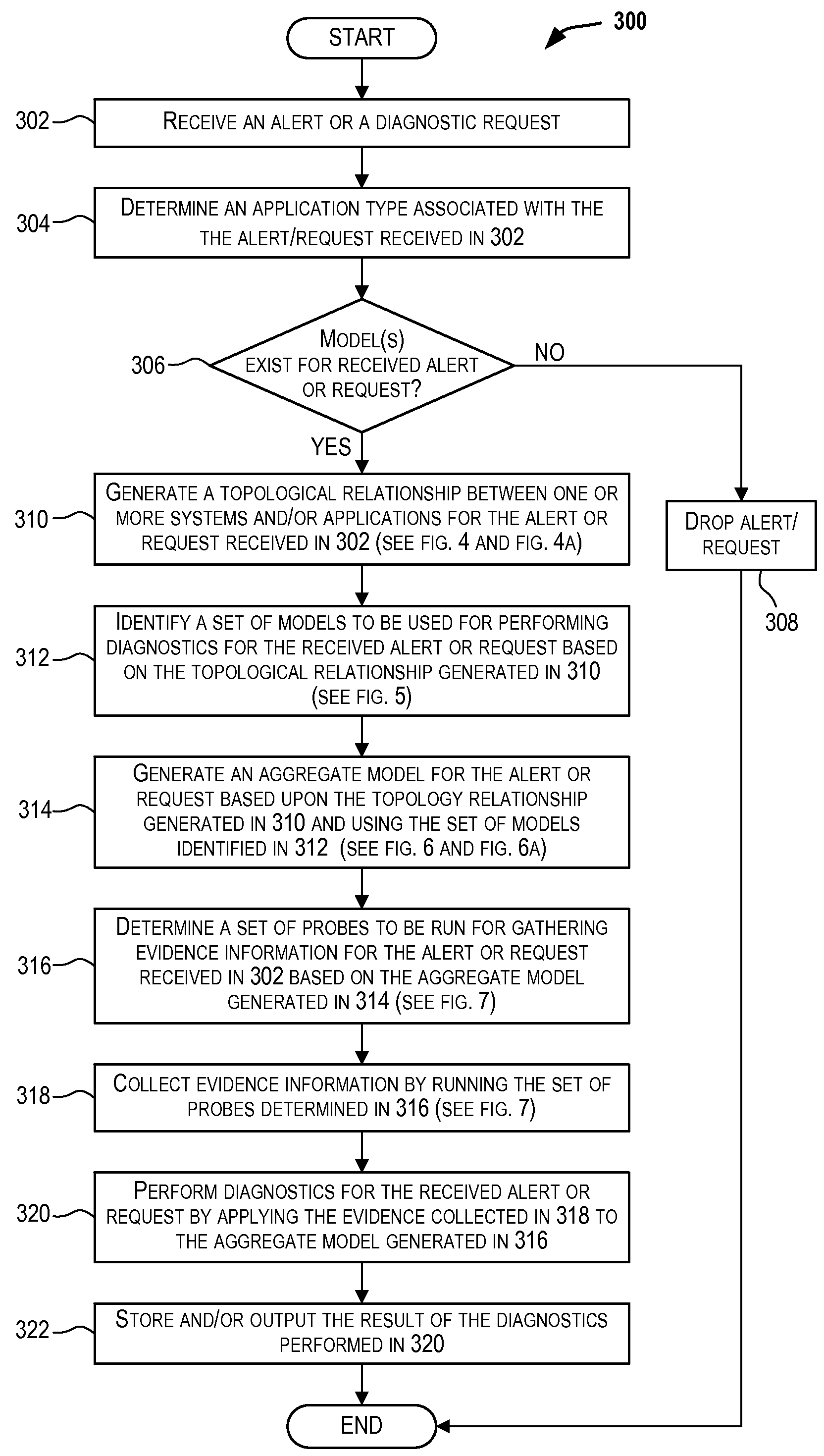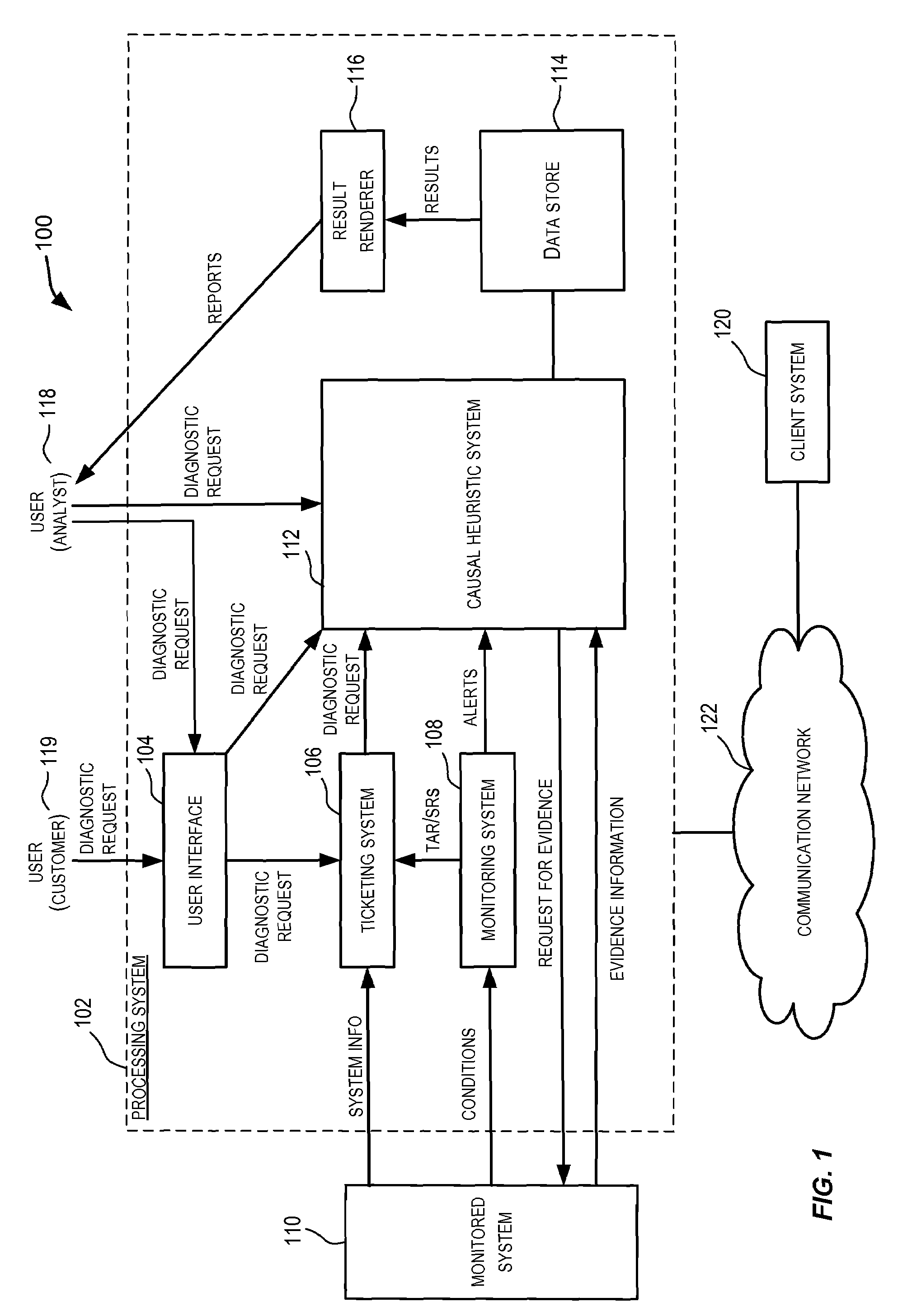Techniques for determining models for performing diagnostics
a diagnostic model and model technology, applied in the field of diagnostics, can solve the problems of difficult task to determine a set, inability to readily obtain full failure data, and inability to establish the de facto tool of problem diagnosis by experts
- Summary
- Abstract
- Description
- Claims
- Application Information
AI Technical Summary
Benefits of technology
Problems solved by technology
Method used
Image
Examples
Embodiment Construction
[0029]In the following description, for the purposes of explanation, specific details are set forth in order to provide a thorough understanding of embodiments of the invention. However, it will be apparent that the invention may be practiced without these specific details.
[0030]FIG. 1 is a simplified block diagram of a system 100 incorporating an embodiment of the present invention. As depicted in FIG. 1, system 100 comprises a processing system 102 that is configured to provide diagnostic services for one or more systems 110 (referred to as monitored systems). A monitored system 110 may be a software system, a hardware system, an enterprise system, and the like, or combinations thereof. For example, monitored system 110 may be a complex enterprise software system such as a database system and related products provided by Oracle Corporation™ of California. Monitored system 110 may comprise one or more systems (e.g., may be an eco-system of multiple systems) with each system running...
PUM
 Login to View More
Login to View More Abstract
Description
Claims
Application Information
 Login to View More
Login to View More - R&D
- Intellectual Property
- Life Sciences
- Materials
- Tech Scout
- Unparalleled Data Quality
- Higher Quality Content
- 60% Fewer Hallucinations
Browse by: Latest US Patents, China's latest patents, Technical Efficacy Thesaurus, Application Domain, Technology Topic, Popular Technical Reports.
© 2025 PatSnap. All rights reserved.Legal|Privacy policy|Modern Slavery Act Transparency Statement|Sitemap|About US| Contact US: help@patsnap.com



